6 reasons why OneNote is the ultimate note-taking tool
Content comes in all shapes and forms. As part of the daily work routine, we deal with documents, tasks, contacts (people) and events. For each type of content, we have a place to store and organize it in SharePoint. For documents – we have a document library, for events – we have Outlook calendar, for tasks – Tasks Web part or Planner and for Contacts – Contacts web part. And then we usually have “everything else” category – which does not fit the profile of any of the content above. That category could include informal notes, drafts, knowledge base, wiki, etc.
Luckily, there is a tool to handle and store that ”everything else” category, and that tool is called OneNote. Let me explain what this is all about and why you might want to look into this tool and make it THE tool of choice for your organization.
What is OneNote?
OneNote is Microsoft’s digital note-taking application. It is available for free on Windows PCs and is also included as part of SharePoint/Office 365 subscription.

What makes OneNote special?
Here are the reasons, that, in my opinion, make OneNote a standout tool.
Reason 1: Familiar interface
OneNote employs a familiar interface that is already part of other MS Office tools, like Word, Excel, PowerPoint. It has a horizontal ribbon across the top, where you can access all the commands and common operations.

Reason 2: Logical hierarchy
OneNote follows a “paper” notebook approach for organizing and storing notes electronically. Just like with the regular, paper-based notebook, where you have different pages and sections, OneNote follows the same exact terminology and methodology. Within OneNote, you can create:
Pages
Pages would be your regular pages in a notebook. For example, you could create a page for each meeting, where agenda and meeting minutes would be stored.
Sections
Pages are then organized into sections. A section is how you would typically break down your paper notebook, right? So you can have a section for Meetings, a section for Project Issues, Business requirements, etc.

Notebooks
Pages and Sections make up a single Notebook. Of course, you can create many different notebooks. For example, you can create a Notebook for each project.
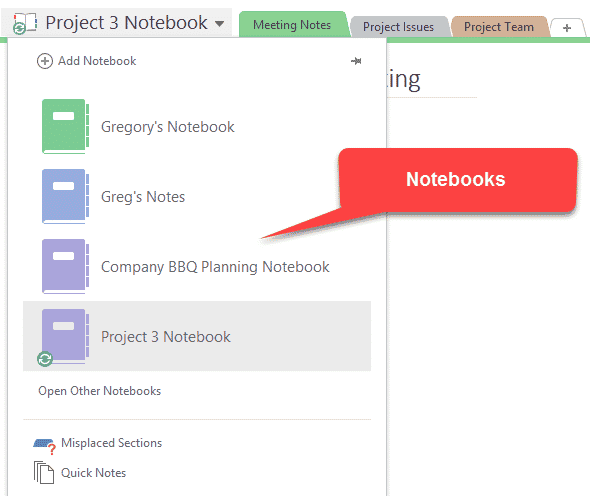
Reason 3: Part of SharePoint Sites and Office 365 Groups
I will admit that I never thought much of OneNote until it became a default staple of SharePoint and Office 365. That’s right, every time you create a new SharePoint site, OneNote notebook is included by default (it resides in the Site Assets library). And there is usually a link from Quick Launch navigation as well.
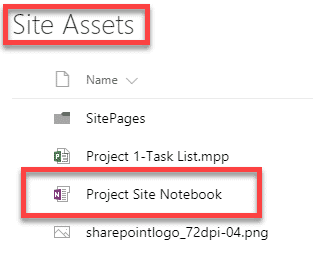
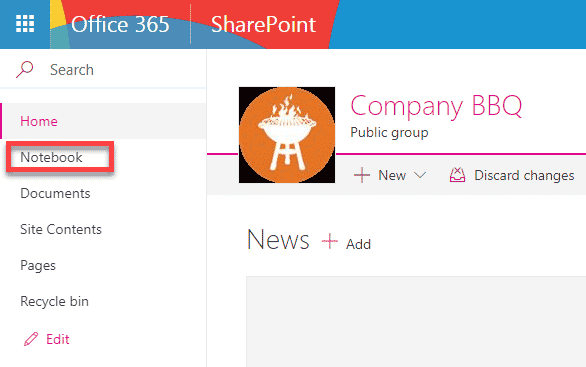
Likewise, every time you create an Office 365 Group, OneNote is also included by default and is accessed via prominent link/navigation.
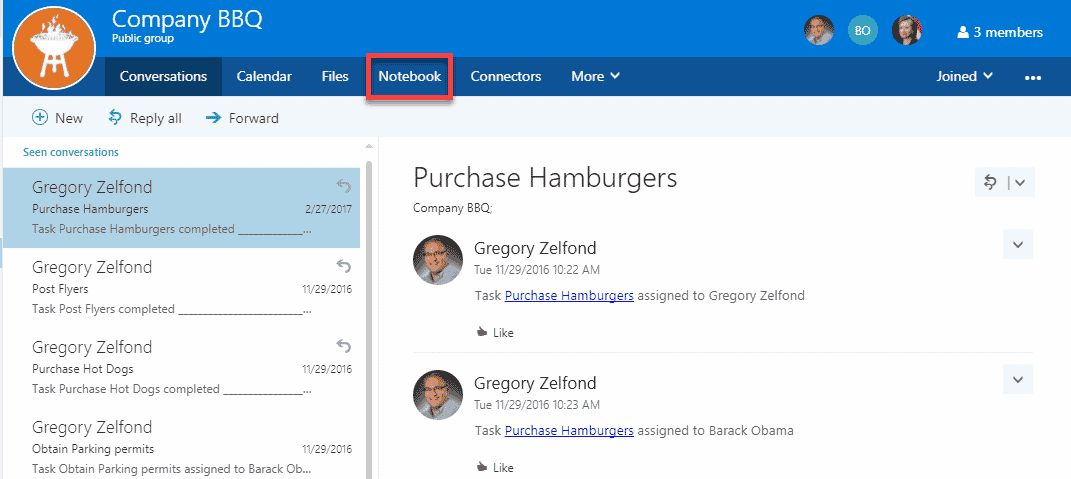
That also includes Office 365 Groups assets like Planner and Teams.
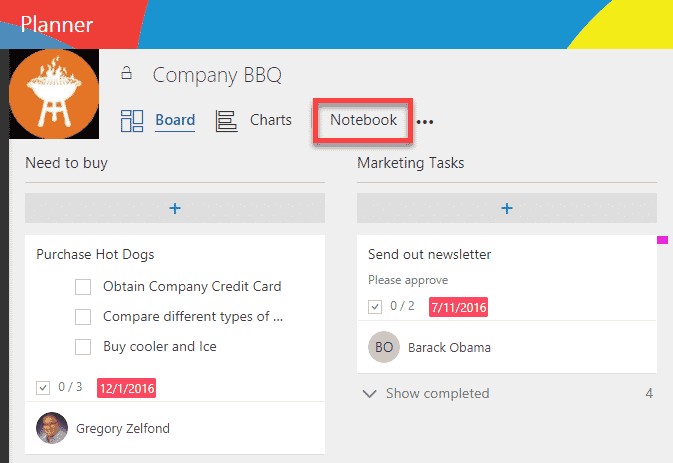
So, in summary, you can no longer escape OneNote – it is everywhere! :-) By being a default component of SharePoint and making it easily accessible, OneNote is a no-brainer when it comes to quick note-taking while working with other types of content.
Reason 4: Integration with Outlook
OneNote has a pretty cool integration with Outlook. You can pull meeting details into OneNote from Outlook. Likewise, you can embed notes into your Appointment invite with just a click of a button. No more attachments and users asking to send them an Agenda!
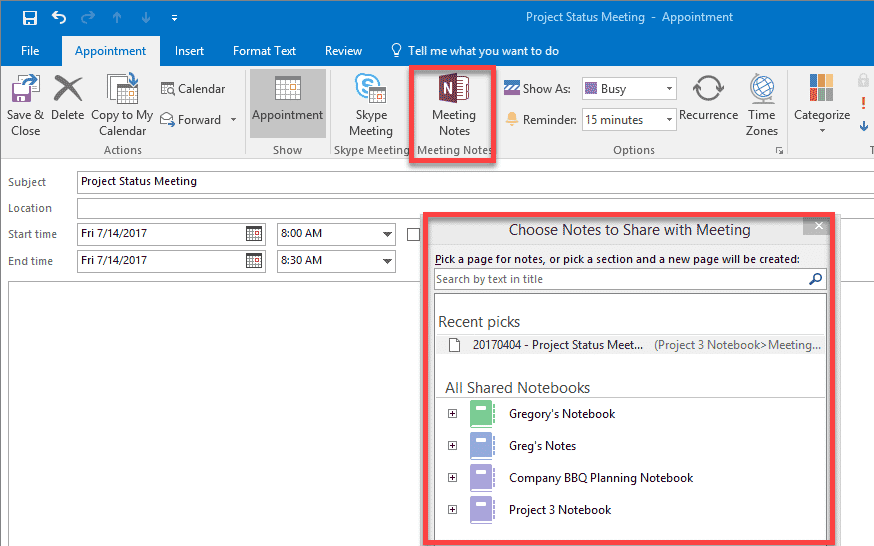
Reason 5: Mobile-friendly
Just like SharePoint, OneDrive, and other MS Office tools, OneNote also has a mobile app. This makes OneNote easily accessible from the “field,” where there is no time to create formal documents.

Reason 6: Online editing
Like the rest of MS Office tools, OneNote can be edited in the browser. That means that you do not need to download the file or even have OneNote installed if you want to make quick OneNote changes “on the fly”.
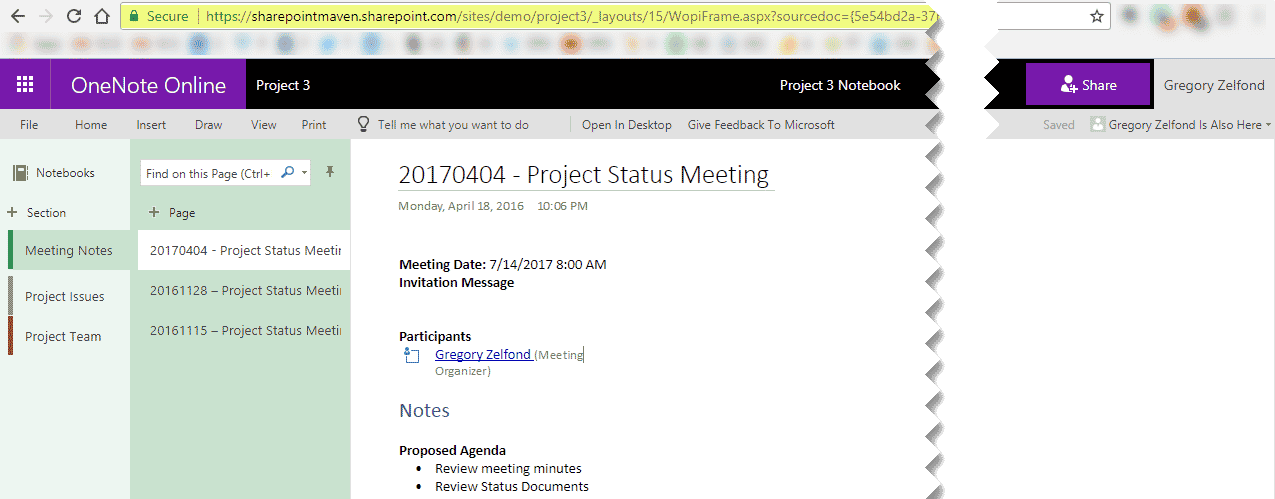
How organizations use OneNote
The beauty about OneNote is that due to its nature (informal note taking), it can be used in a variety of different ways. Here are a few examples I have seen from my experience:
Project Meeting artifacts
OneNote is great for Project Management. As a matter of fact, I even blogged about OneNote being used extensively in the field of project management. You can use OneNote pages to communicate meeting agendas, meeting minutes, project status.
Company or Department Wiki
I have seen a lot of organizations utilizing OneNote to build a company Wiki! Yes, you can use SharePoint pages to build a company Wiki, but OneNote allows for all sorts of fancy editing one might find hard to accomplish with SharePoint pages (ability to insert and format tables, videos, images, etc.). Moreover, a structured format using pages and sections allows you to build a pretty structured knowledge base with native ways to organize information into logical buckets. On top of that, OneNote Notebook is fully searchable, which means that users can search by any keyword! So this makes OneNote a great candidate for a company or department Wiki.
User Feedback/Informal Requirements/Wish Lists
OneNote can also become a great tool to gather, say, business requirement for software or wish list items/feedback from users. Until you have a formal document in place, OneNote can also become a “dumping ground” for users to come in and type in whatever they want. Might be a quick way to gather some input from users without setting up complicated surveys or structure.



